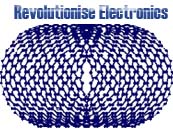New 'superinsulators' may revolutionise materials research, electronics design
 London, April 9 : A study conducted by researchers from the US Department of Energy's Argonne National Laboratory and several European institutions has shown the possibility of creating superinsulators that can prevent the wastage of energy as heat.
London, April 9 : A study conducted by researchers from the US Department of Energy's Argonne National Laboratory and several European institutions has shown the possibility of creating superinsulators that can prevent the wastage of energy as heat.
The hope that superinsulators may find their way into circuits, sensors, battery shields and a number of products results from the results of experiments with a thin film of titanium nitride.
The researchers chilled the film of titanium nitride to near absolute zero, and then tried to pass a current through the material. They observed that its resistance suddenly increased by a factor of 100,000 once the temperature dropped below a certain threshold.
“Titanium nitride films, as well as films prepared from some other materials, can be either superconductors or insulators depending on the thickness of the film,” Nature magazine quoted Valerii Vinokur of Argonne Materials Theory Institute as saying.
“If you pass a current through a superconductor, then it will carry the current forever; conversely, if you have a superinsulator, then it will hold a charge forever,” he added.
The researcher further said that films made of made from materials other than titanium nitride may also provide superconductors or insulators.
"Titanium nitride films, as well as films prepared from some other materials, can be either superconductors or insulators depending on the thickness of the film," Vinokur said.
"If you take the film which is just on the insulating side of the transition and decrease the temperature or magnetic field, then the film all of a sudden becomes a superinsulator," he added.
He envisioned that someday superinsulators would encapsulate superconducting wires, and thereby create an optimally efficient electrical pathway with almost no energy lost as heat.
Vinokur also revealed that the transition of titanium nitride into a superinsulator take place because the electrons in the material join together in twosomes called Cooper pairs. He said that Cooper pairs joining together in long chains enable the unrestricted motion of electrons and the easy flow of current, creating a superconductor.
However in superinsulators, he said, the Cooper pairs stay separate from each other, forming self-locking roadblocks.
"In superinsulators, Cooper pairs avoid each other, creating enormous electric forces that oppose penetration of the current into the material. It's exactly the opposite of the superconductor," Vinokur said. (ANI)